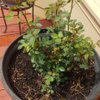Dr Huey
ogrose_tx
11 years ago
Related Stories

DECORATING GUIDESDinner and a Good Book: 12 Double-Duty Dining Rooms
Create your own library-inspired reading room by pairing a dining table with bookshelves
Full StoryI have three Dr Hueys growing in my yard, and have tried for years to get rid of them - no luck, he just keeps coming back! Have tried to dig out and that hasn't worked for me.
Gorgeous in the spring, one of them gets yellow leaves after blooming, the other two seem to stay healthy no matter what the weather is - so, I've decided to accept him as he is and feed alfalfa just like my other roses, and see what happens!
Mistake? Would like opinions.
Thanks.




roseseek
buford
Related Professionals
Ballwin Landscape Architects & Landscape Designers · Fort Lee Landscape Architects & Landscape Designers · Fort Lee Landscape Architects & Landscape Designers · Middle River Landscape Architects & Landscape Designers · Canton Landscape Contractors · Goodyear Landscape Contractors · Hartford Landscape Contractors · Aberdeen Landscape Contractors · Fair Oaks Landscape Contractors · Fairfield Landscape Contractors · La Vista Landscape Contractors · St. Louis Landscape Contractors · University City Landscape Contractors · Wickliffe Landscape Contractors · Woodbury Landscape Contractorseahamel
kittymoonbeam
mendocino_rose
kstrong
ogrose_txOriginal Author
roseseek
michaelg
buford
ogrose_txOriginal Author
seil zone 6b MI
Maryl (Okla. Zone 7a)
ogrose_txOriginal Author
henry_kuska
seil zone 6b MI
michaelg